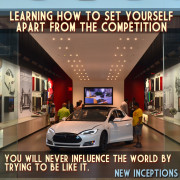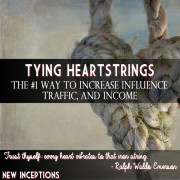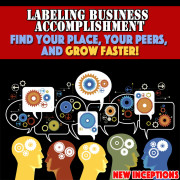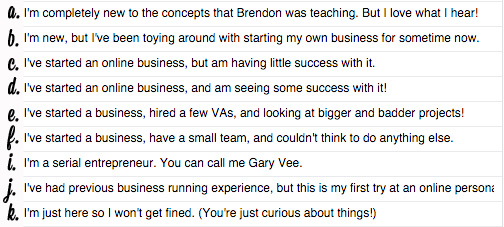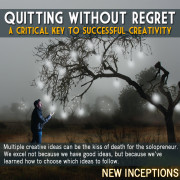4 Ways to Become More Disciplined
Have you ever struggled to get things done? To finish what you have started before moving on to something else?
Maybe, if you’re like me, you’ve found yourself motivated to do something at one point, do it a few times, and possibly even come to a point where it’s a habit. However, you eventually you lose your ability to muster up the strength to do it again.
You’re definitely not alone. Time and again, I’ve seen this issue in several groups I’ve belonged to in the past. The number one problem that I see people struggle with is consistency. Or really, just the lack of focus. Things get jumbled up in their priorities and they’re really never able to finish what they’ve begun.
Becoming More Disciplined:
The term disciplined has such a negative connotation to it. When I think of the word, I think of someone getting scolded by a coach or parent. Or perhaps a dog getting yelled at for doing their business in the house.
However, the term has two meanings. What I just gave examples for is one definition. The other definition is a branch of knowledge, typically one studied in higher education.
In effect, when someone becomes more disciplined, they’re essentially becoming more masterful at something.
Also, I should mention that a 2014 study showed that “engaging in personally interesting activities not only improves performance, but also creates an energized experience that allows people to persist when persisting would otherwise cause them to burn out.”
So instead of thinking of being more disciplined as a bad thing, let’s look at it from a skill building perspective. The more disciplined you are, the better you are at a particular task or type of work that you enjoy doing.
Now that we have that definition, let’s look at the 4 ways of gaining mastery at something.
Method #1 – Build Accountability:
There’s a few ways that we can build accountability. I’m sure you’ve probably heard of accountability buddies. These are people who are on the same or similar path to you. You’re both working for the same goal.
In my personal development circles, a group of this kind of person that meets regularly is a Mastermind.
This past year, I’ve been hosting a mastermind that is based on business building. Not only does this group provide a place for people to talk about what they’ve done in the past week, but it also gives them a place to discuss any problems they’re having and help with any decisions they’re having problems with.
Another way of building accountability outside of people that have similar goals in a mastermind is just learn how to celebrate small wins. This was always something I struggled with – especially in college. What I’ve come to realize since then, though, is that the more you celebrate your small wins, the more incentive you’ll have to stay on track in achieving bigger and better things!
If you’re looking for a way of building accountability that isn’t done with other people is to use a journal. In the past, I’ve talked about using The Five Minute Journal. There are similar ones out there. But this is the one that I’d recommend. After going through my first physical one, I’m now waiting on an Android version! 🙂 However if you have an iOS device, you can get that version already.
Method #2 – Remove Distractions:
This one is probably one of the hardest ones to deal with in today’s world. We are programmed by the world to want to interact with everything that is shiney, vibrates, makes a notification sound, or is annoying.
How much work could you get done if you could eliminate everything from your life that did those things?
So if you’re really wanting to focus on something, turn off or lower the volume on the TV, listen to music that’s lyrics don’t get you too hyped, and keep away from social media when you’re actually doing work. (If you have trouble with that last one, there’s actually some plugins for your browser that will help you with that.)
If you’re in a position where you’re constantly getting bombarded with emails, here’s a thought: don’t pay attention to them until you’re ready. And when you are ready, check it once and then turn it off for the evening. Personally, I do a couple of things in the morning that I have to do before I ever check my email.
As someone that’s trying to do your own thing, you need to spend unbroken time on your projects. Don’t let email become your new boss.
Method #3 – Focus On One Thing
A book that I haven’t had the pleasure of reading yet is called The One Thing, Many of the podcasters and bloggers that I follow love this book. So I have a good understanding of what it’s about.
One of the quotes that I’ve heard a couple of times from it is this:
The path of mastering something is the combination of not only doing the best you can do at it, but also doing it the best it can be done. – Gary Keller
The gist here is simple. Don’t try to multitask. No one is really good at it. Get into a zone and focus on using a superpower of yours.
Pat Flynn, who I think talks about the book the most, says that the way he does this is by block scheduling his day. In fact, he did a recent write up that goes step by step in what his schedule looks like right now.
However, just having certain things due each day is only part of the equation. You might be running a little late in a given day. Does that give you permission to stop early?
Nope! It means that you’re staying and getting stuff done until you get it done OR if you have kids that you make time for, you play with them until they go to bed and then you start cranking the midnight oil. Finish Strong!!
Method #4 – Be Aware of the Negative, but Don’t Act of It:
I was just listening to a podcast (it might have been this one?) where the guest that was being interviewed said that we shouldn’t spend energy trying to avoid negative in our lives. We are designed to be problem solvers, so, therefore, our brains our naturally looking for things that they can fix. That’s just what we’re made of.
However, there are times when you need to ignore the negative that comes into your life – especially if it doesn’t come in the form of constructive criticism. There are some people out there that their way of building themselves up is by being critical of other people.
These are trolls. Don’t feed them. Don’t let them get to you. They call you “dumb” or “weird”, then they’re probably “weird” themselves. Don’t let the one bad review shadow over all your compliments!
Many people are not going to get ahead today simply because they don’t know how to ignore other’s thoughts. John Cleese explains in this video:
Also, don’t let yourself be your own worst enemy. If you find yourself coming up with more and more excuses on why you can’t do something (it’s not the right time, someone else has more luck than you, or you don’t have the right skill set), FIGURE IT OUT. Actually let that brain do its job of putting the pieces together! Heck, you might even find a way to collaborate with someone who needs your skillset.
Action Steps:
Now that you have a few tools that you can use to get more skillful at your work, pick a few to start implementing as soon as possible. Which is one that you can start today? How about in 15 days? Perhaps a month?
For those of you who do use some of the discipline techniques above, what are some of your results of using them? Do you have any suggestions that I missed?



